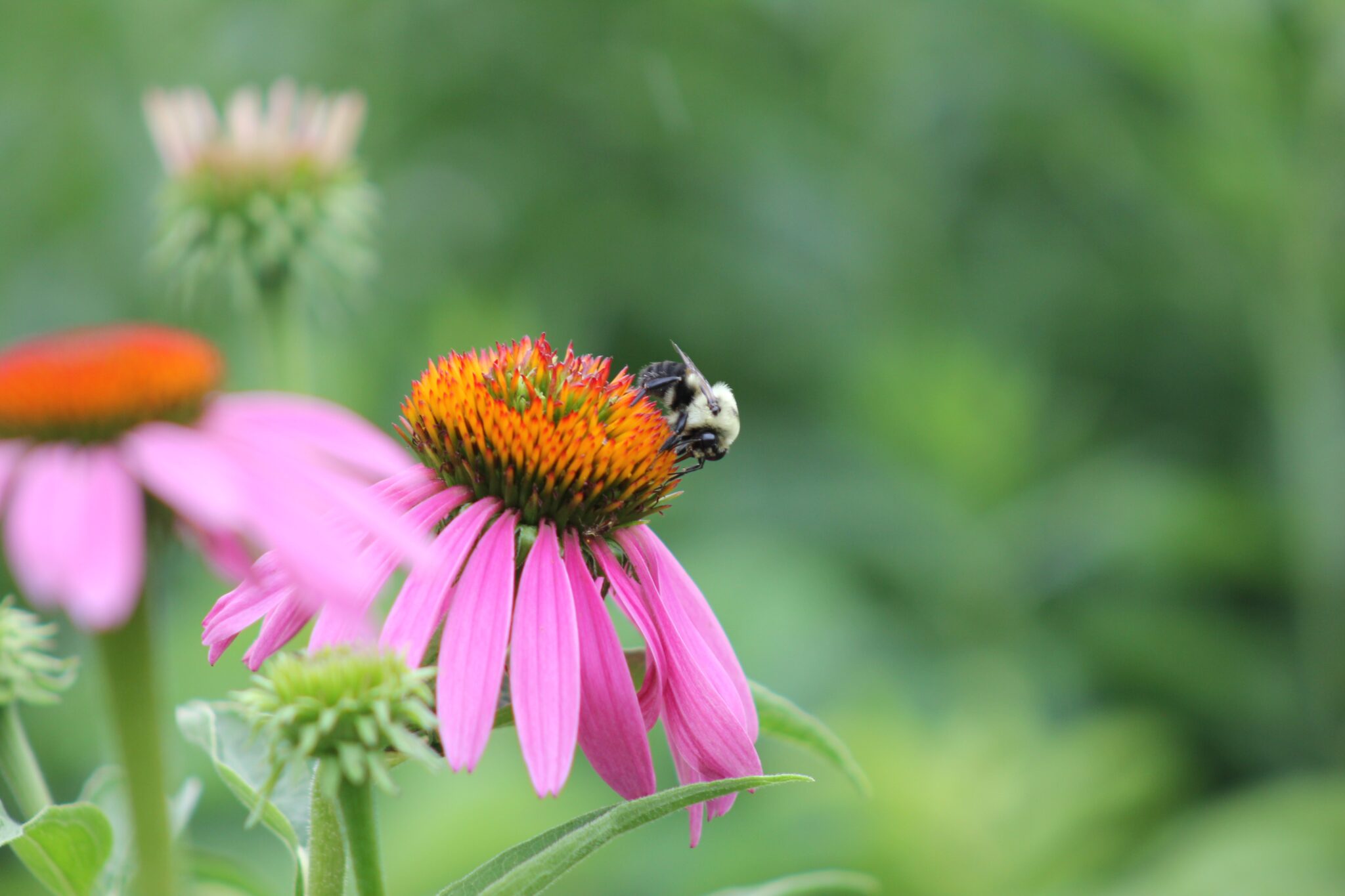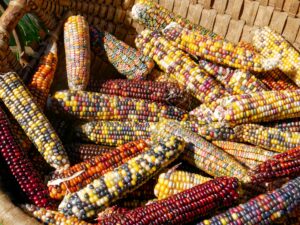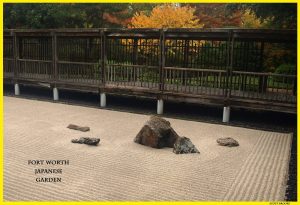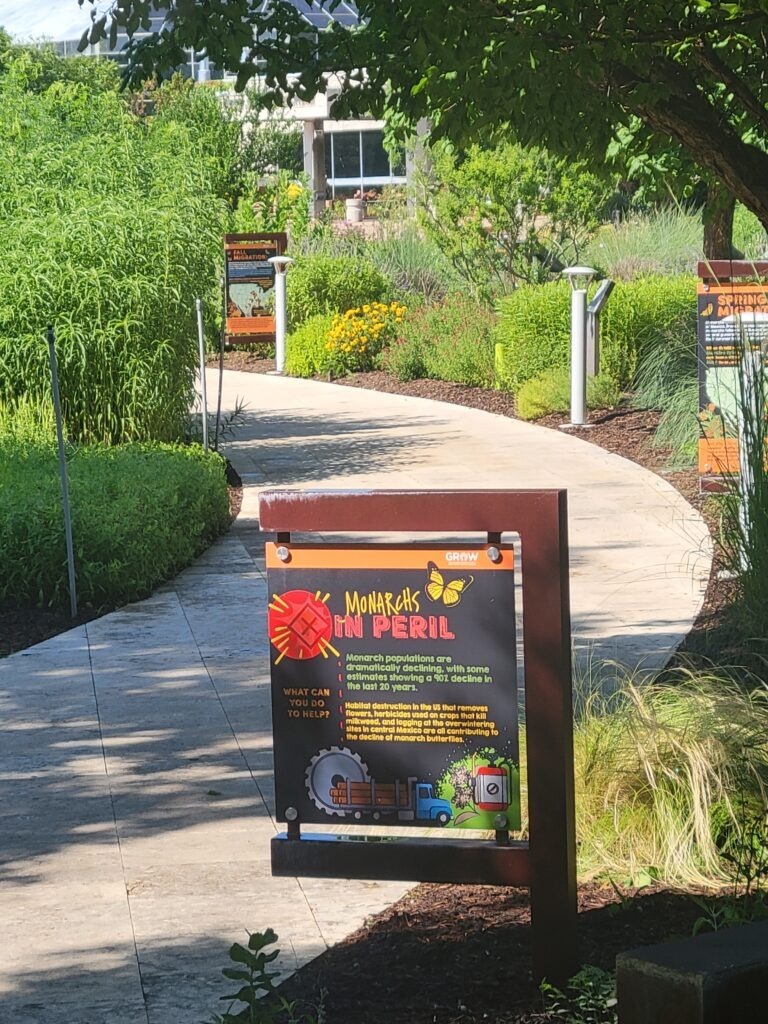
The Garden’s Pollinator Pathway is a-buzz this month with bees, butterflies, hummingbirds and other pollinators busy collecting nectar from blooming plants. To enjoy this whirl of activity in your own garden–and help support the overall health of our ecosystem–look to summer-blooming native plants.
Imagining Life without Pollinators
Scientists have looked at what life would be like without bees and butterflies, and it isn’t a pretty picture. It’s true some of the most essential crops don’t rely on pollinators–wheat, rice and corn would be OK, as would sugarcane and sugarbeets. (These plants are able to pollinate themselves.) So what would we lose?
Fruit pies. Apples, peaches, blueberries, strawberries, lemons and limes all need pollinators.
Guacamole. Both avocados and tomatoes rely on pollinators.
Potatoes. Adios, french fries. And there’s would be no point in trying to substitute onion rings–no pollinators, no onions. Plus, without pollinators, you wouldn’t have any mustard for your burger, and your bun wouldn’t have sesame seeds.
Coffee. Without pollinators, you couldn’t get lattes, frappuccinos, flat whites, or basic cups of joe.
Wine. While most grapes can self-fertilize, pollinators are essential for cover crops, the plants grown around grapevines to keep the soil healthy. Adieu, pinot noir and chardonnay.
Chocolate. The cacao plant (Theobroma cacao) is pollinated exclusively by a tiny insect called a chocolate midge. No midge, no fudge.
The point of pollinators.
It’s easy to underestimate the importance of pollinators on our planet, but they are essential. Bees, butterflies and hummingbirds are the most well-known pollinators, but moths, ants, bats and flies also play a role. All of them consume nectar, a sugary fluid produced by flowers.
When a pollinator gulps down tasty, tasty nectar, it also picks up tiny grains of pollen produced by the flower’s anthers, the male part of the plant. The pollinator then carries those grains to the other flowers that it visits in search of more nectar. Some of that pollen will stick to the stigmas of other flowers; the stigma is the female part of the plant. Boom! Those flowers are now fertilized and can produce fruits and seeds.
Roughly 80 percent of all flowering plants need pollinators to reproduce. Of the 1,400 or so crop plants grown around the world, 75 to 80 percent require pollination by animals. As well as supplying basic nutrients, many of these plants produce critical vitamins and minerals. “The majority of dietary lipids, calcium, fluoride, iron, carotenoids, lycopene, beta-cryptoxanthin, and the vitamins A, C, and E consumed worldwide come from crops that require pollinators,” according to the National Resources Defense Council. Without pollinators, we would all have bad teeth and brittle bones, we might be anemic, we would definitely have scurvy, and we would all be at higher risk for heart disease and cancer.
And yet pollinators are at risk with populations declining around the world. According to the Smithsonian Institution, “Decades of stressors including the loss, degradation, and fragmentation of pollinator habitats; the improper use of pesticides and herbicides; and diseases, predation, and parasites have all hurt pollinators.”
It will take widespread, systemic action to eliminate risks to pollinators, but there’s good news. Individuals can make a real difference by creating pollinator-friendly habitats full of native, flowering plants.
Making the Case for Milkweed (Asclepias.)
Milkweed is a special plant, because it is essential to the survival of monarch butterflies. While the butterflies feed on nectar from a wide variety of plants, the females exclusively lay their eggs on milkweeds. When the caterpillars hatch, they feed on milkweed–and that’s it. The decline in monarch butterfly populations has been traced to the eradication of milkweed in agricultural areas. If we’re going to have monarchs, we must have milkweed.
Many experts recommend avoiding tropical milkweed, which does not die back in the winter and might disrupt migration patterns. Look instead for natives including antelope horn milkweed (Asclepias asperula) and green antelope horn milkweed (Asclepias viridis). The plants prefer full sun and sandy, well-drained soils. They tend to grow slowly, and they attract aphids, but it is essential not to spray the plant with pesticides, which would hurt the caterpillars. Usually other insects will take care of the aphids.
It isn’t always easy to find native milkweed in garden centers, so call around before you shop. Nurseries that specialize in native plants are the most likely to carry these varieties. Or you can plan to buy native milkweed at the Fall Plant Sale at the Garden Oct. 5-7, along with many of the plants highlighted in this article.
Plants for North Texas Pollinators
Native plants are particularly important for pollinators, since the pollinators native to this region evolved alongside these native plants. They have mutually beneficial relationships. Non-native plants might not provide pollinators enough nectar or pollen, or they might be inedible to the insects that need to feed on them.
Some great native plants for North Texas pollinators include the following:
Autumn Sage (Salvia greggii). This plant is available in colors from deep red to pale yellow and salmon to red-violet. A small shrub, it adapts easily to a variety of soils, blooms from spring to fall and has a high tolerance for Texas heat.
Black-eyed susan (Rudbeckia hirta). Bright-yellow, 2-3 in. wide, daisy-like flowers with dark centers make this plant a favorite. Requires full sun.
Butterfly weed (Asclepias tuberosa). Bright yellow-orange flowers cover this plant in summer. Unlike other milkweeds, butterfly weed does not ooze caustic milky sap if damaged. On the other hand, it is less likely to support monarch caterpillars.
Blue mistflower (Conoclinium coelestinum). Produces feathery flowers in a pale lavender blue. Needs full sun to partial shade and spreads easily.
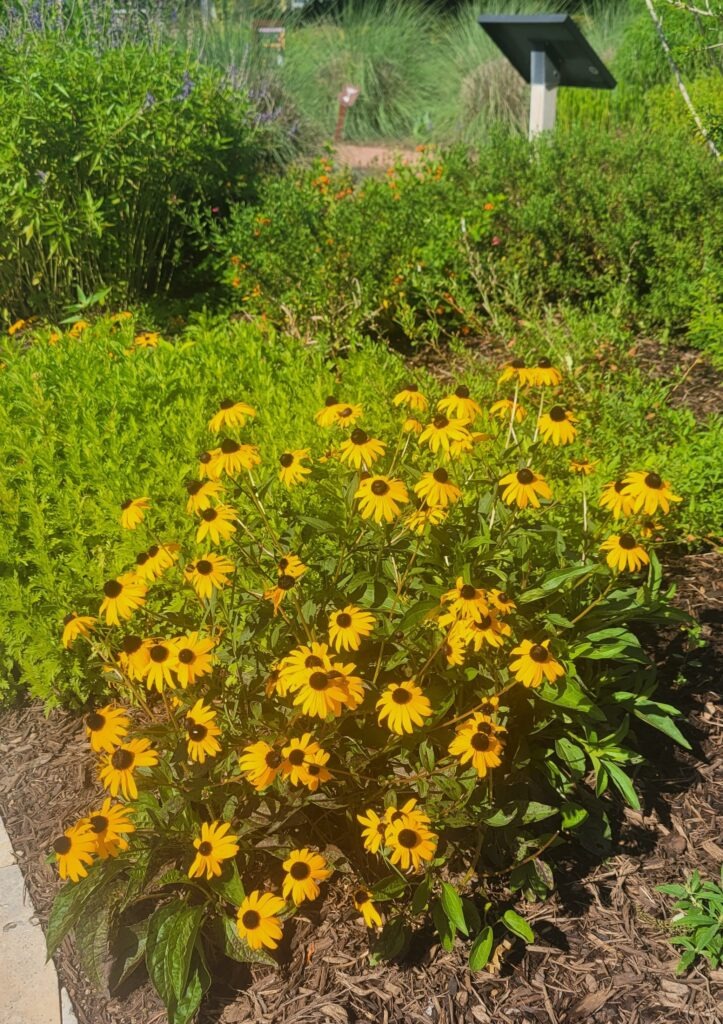
Lanceleaf coreopsis (Coreopsis lanceolata). Bright yellow leaves bloom above a mound of narrow green leaves. Prefers full sun and dry soil.
Texas lantana (Lantana urtecoides). Native lantana thrives under the worst conditions, include bad soil, high temperatures and low water availability, and yet blooms all summer long. Needs full sun.
Turk’s Cap (Malvaviscus drummondii). This hardy perennial thrives in all kinds of soils, endures drought without complaint, and blooms summer through fall. The flowers are generally red, although pink and white varieties are available. Prefer shady locations.
For more ideas about pollinator favorites, visit the Pollinator Pathway. Follow the buzzing to the plants playing host to bees, butterflies and hummingbirds and consider finding room for them in your own garden.

